Related Research Articles
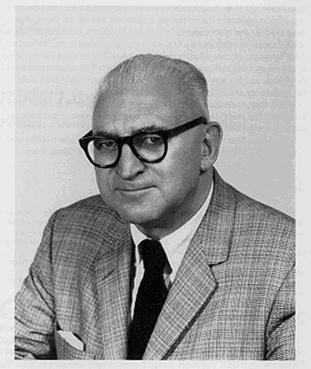
Harold Dwight Lasswell was an American political scientist and communications theorist. He earned his bachelor's degree in philosophy and economics and his Ph.D. from the University of Chicago. He was a professor of law at Yale University. He served as president of the American Political Science Association, American Society of International Law, and World Academy of Art and Science.
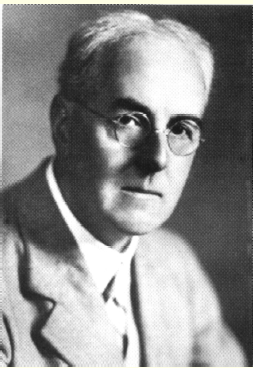
Lewis Fry Richardson, FRS was an English mathematician, physicist, meteorologist, psychologist, and pacifist who pioneered modern mathematical techniques of weather forecasting, and the application of similar techniques to studying the causes of wars and how to prevent them. He is also noted for his pioneering work concerning fractals and a method for solving a system of linear equations known as modified Richardson iteration.

James Samuel Coleman was an American sociologist, theorist, and empirical researcher, based chiefly at the University of Chicago.
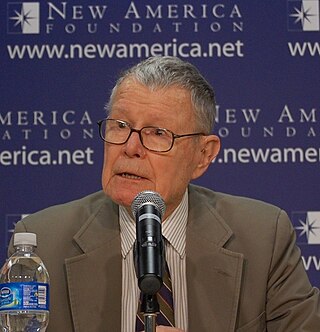
Thomas Crombie Schelling was an American economist and professor of foreign policy, national security, nuclear strategy, and arms control at the School of Public Policy at University of Maryland, College Park. He was also co-faculty at the New England Complex Systems Institute.

Philip Quincy Wright was an American political scientist based at the University of Chicago known for his pioneering work and expertise in international law, international relations, and security studies. He headed the Causes of War project at the University of Chicago, which resulted in the prominent 1942 multi-volume book A Study of War.
Quantitative history is a method of historical research that uses quantitative, statistical and computer resources. It is a type of the social science history and has four major journals: Historical Methods, Journal of Interdisciplinary History, the Social Science History, and Cliodynamics: The Journal of Quantitative History and Cultural Evolution.

Mathematical sociology is an interdisciplinary field of research concerned with the use of mathematics within sociological research.

The American Sociological Review is a bi-monthly peer-reviewed academic journal covering all aspects of sociology. It is published by SAGE Publications on behalf of the American Sociological Association. It was established in 1936. The editors-in-chief are David Cort, Laurel Smith-Doerr, and Donald Tomaskovic-Devey.
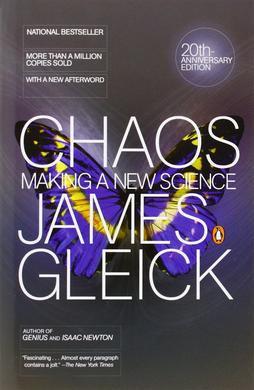
Chaos: Making a New Science is a debut non-fiction book by James Gleick that initially introduced the principles and early development of the chaos theory to the public. It was a finalist for the National Book Award and the Pulitzer Prize in 1987, and was shortlisted for the Science Book Prize in 1989. The book was published on October 29, 1987 by Viking Books.
William Anthony Gamson was a professor of Sociology at Boston College, where he was also the co-director of the Media Research and Action Project (MRAP). He is the author of numerous books and articles on political discourse, the mass-media and social movements from as early as the 1960s. His influential works include Power and Discontent (1968), The Strategy of Social Protest (1975), Encounters with Unjust Authority (1982) and Talking Politics (2002), as well as numerous editions of SIMSOC.
The following events related to sociology occurred in the 1980s.
War Before Civilization: the Myth of the Peaceful Savage is a book by Lawrence H. Keeley, a professor of archaeology at the University of Illinois at Chicago who specialized in prehistoric Europe. The book deals with warfare conducted throughout human history by societies with little technology. In the book, Keeley aims to stop the apparent trend in seeing modern civilization as bad, by setting out to prove that prehistoric societies were often violent and engaged in frequent warfare that was highly destructive to the cultures involved.
Lewis Samuel Feuer was an American sociologist. Initially a committed Marxist, he became a neo-conservative.
Jack Nusan Porter is an American writer, sociologist, human rights and social activist, and former treasurer and vice-president of the International Association of Genocide Scholars. He is a former assistant professor of social science at Boston University and a former research associate at Harvard's Ukrainian Research Institute. Currently, he is a research associate at the Davis Center for Russian and Eurasian Studies at Harvard University, where he conducts research on Israeli-Russian relations. Some of his research focuses include the life of Golda Meir, the application of mathematical and statistical models to predict genocide and terrorism, and modes of resistance to genocide. His most recent books are Is Sociology Dead?, Social Theory and Social Praxis in a Post-Modern Age, The Genocidal Mind, The Jew as Outsider, and Confronting History and Holocaust.
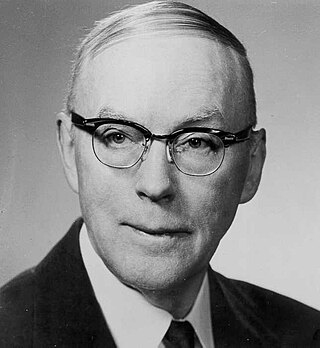
George Andrew Lundberg was an American sociologist.
Paul H. Lewis is professor emeritus and former Chair of Political Science at Tulane University. Lewis received his BA from the University of Florida and PhD from UNC Chapel Hill. In 1991, he helped organize the Louisiana chapter of the National Association of Scholars.
Margaret Jarman Hagood was an American sociologist and demographer who "helped steer sociology away from the armchair and toward the calculator". She wrote the books Mothers of the South (1939) and Statistics for Sociologists (1941), and later became president of the Population Association of America and of the Rural Sociological Society.
Raymond Leslie Buell (1896–1946) was an American social scientist. He was an instructor at Harvard University until 1927 when he became research director at the Foreign Policy Association. He later became president of the Foreign Policy Association. He influenced the work of Ralph Bunche.
Primitive Rebels is a 1959 book by Eric Hobsbawm on pre-modern European social movements and social banditry.
Michael Spagat is an American-British economist and researcher of war and armed conflict. He is currently a professor of economics at Royal Holloway, University of London. He is also a board member of Every Casualty Counts and Action on Armed Violence.
References
- 1 2 3 Sagi, Philip C. (July 1961). "LEWIS F. RICHARDSON. Statistics of Deadly Quarrels. Edited by Quincy Wright and C. C. Lienau. Pp. xxv, 307. Chicago: Quadrangle Books, 1960. $12.50". The Annals of the American Academy of Political and Social Science. 336 (1): 209. doi:10.1177/000271626133600166. ISSN 0002-7162. S2CID 145274420.
- 1 2 3 4 5 Bull, Hedley (July 1961). "Arms and Insecurity: A Mathematical Study of the Causes and Origins of War and Statistics of Deadly Quarrels". International Affairs. 37 (3): 350. doi:10.2307/2610948. ISSN 1468-2346. JSTOR 2610948.
- 1 2 3 4 5 Etzioni, Amitai (1962). "Review of Arms and Insecurity.; Statistics of Deadly Quarrels., Lewis F. Richardson". American Journal of Sociology. 67 (4): 464–466. doi:10.1086/223172. ISSN 0002-9602. JSTOR 2775148.
- 1 2 3 4 Eckhardt, William (1986). "Review of Statistics of Deadly Quarrels". Peace Research. 18 (1): 36–39. ISSN 0008-4697. JSTOR 23609715.
- 1 2 3 4 Moses, Lincoln E. (December 1961). "Discussions and Reviews : A review: Lewis F. Richardson, Arms and Insecurity and Statistics of Deadly Quarrels". Journal of Conflict Resolution. 5 (4): 390–394. doi:10.1177/002200276100500406. ISSN 0022-0027. S2CID 145486602.
- ↑ Lienau, C. C. (1959). "Review of Statistics of Deadly Quarrels; Arms and Insecurity: The Theory of Arms Races, Lewis Fry Richardson; The Arms Race; Inspection for Disarmament". Management Science. 6 (1): 134–140. ISSN 0025-1909. JSTOR 2627484.
- 1 2 3 4 5 Hayes, Brian (2002). "Computing Science: Statistics of Deadly Quarrels". American Scientist. 90 (1): 10–15. doi:10.1511/2002.13.3269. ISSN 0003-0996. JSTOR 27857587. S2CID 14288824.
- 1 2 3 Gold, David; Richardson, Lewis F.; Rashevsky, Nicolas; Trucco, Ernesto; Wright, Quincy; Lienau, Carl C. (April 1962). "Arms and Insecurity: A Mathematical Study of the Causes and Origins of War". American Sociological Review. 27 (2): 262. doi:10.2307/2089688. JSTOR 2089688.
- 1 2 3 4 5 6 Kecskemeti, P. (1960-12-30). "Statistics of Deadly Quarrels. Lewis F. Richardson. Quincy Wright and C. C. Lienau, Eds. Boxwood Press, Pittsburgh Pa.; Quadrangle Books, Chicago, Ill., 1960. xlvi + 373 pp. $12.50". Science. 132 (3444): 1931–1932. doi:10.1126/science.132.3444.1931. ISSN 0036-8075.
- ↑ Chan, Steve (2010-03-01). "Progress in the Democratic Peace Research Agenda". Oxford Research Encyclopedia of International Studies. doi:10.1093/acrefore/9780190846626.013.280. ISBN 978-0-19-084662-6 . Retrieved 2023-01-11.
- ↑ Richardson, Lewis F. (1960). Statistics of Deadly Quarrels, (London: William Clowes and Sons), p 190, https://archive.org/details/statisticsofdead0000rich/page/190/mode/2up?view=theater&q=government
- ↑ N., M.; Richardson, Lewis F. (June 1961). "Statistics of Deadly Quarrels". Journal of the American Statistical Association. 56 (294): 469. doi:10.2307/2282320. JSTOR 2282320.
- ↑ Sutherland, Ian (1962). "Statistics of Human Conflict". Journal of the Royal Statistical Society. Series A (General). 125 (3): 473–483. doi:10.2307/2982415. ISSN 0035-9238. JSTOR 2982415.